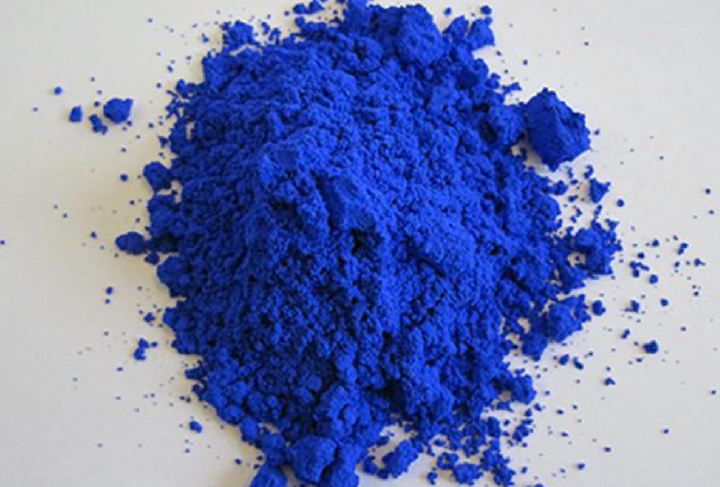
In a stroke of genius and luck, Oregon State University (OSU) scientists managed to create a beautiful new shade of blue, which they’ve dubbed “YInMn blue” after the elements that comprise the shade. Apparently, it’s the result of mixing black manganese oxide with other chemicals at temperatures of 2,000 degrees Fahrenheit. Don’t try that at home.
As per a release about the newest color to join the palette, “The new pigment is formed by a unique crystal structure that allows the manganese ions to absorb red and green wavelengths of light, while only reflecting blue.” But the most exciting aspect of the hue lies in its durability — in fact, OSU scientists say, “its compounds are so stable — even in oil and water — that the color does not fade.” So if you’re looking to do any wall painting, this may be the shade for you.
“It was serendipity, actually; a happy, accidental discovery,” said OSU chemist Mas Subramanian. But now, that discovery has led to a pigment that scientists say could be applied in a number of commercial situations. And because none of the pigment’s ingredients are toxic, it’s perfectly safe for use just about everywhere.
“The basic crystal structure we’re using for these pigments was known before, but no one had ever considered using it for any commercial purpose, including pigments,” Subramanian said. “Ever since the early Egyptians developed some of the first blue pigments, the pigment industry has been struggling to address problems with safety, toxicity and durability.”
And as the researchers continue testing the pigment, they’re finding more and more applications for it. Apparently, Subramanian notes, the pigment could also carry implications for energy efficiency. Because this particular shade of blue boasts infrared reflectivity of about 40 percent, it could be used in roofing as well to keep buildings cool. The research team will continue delving into different kinds of pigments, as well as YInMn blue. “Who knows what we may find?” he asked.
Editors' Recommendations
- Hermès offers new range of non-leather – and leather – bands for Apple Watch
- NASA offers new date for crewed lunar landing as hopes for 2024 fade
- Guess who Jeff Bezos thanked for his Blue Origin rocket ride
- Blue Origin goes after Virgin Galactic over what counts as space
- Someone just bid a whopping $4M for a seat on Blue Origin rocket ride


